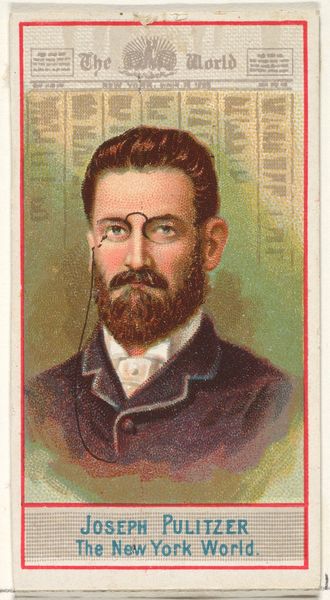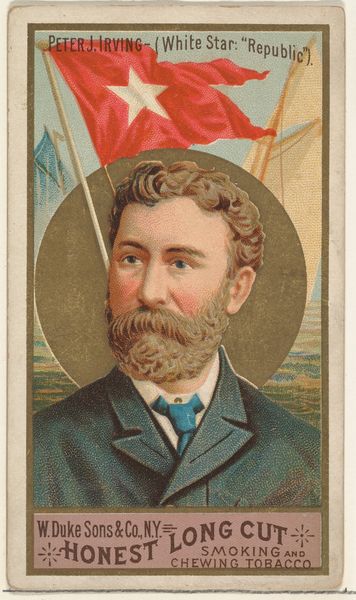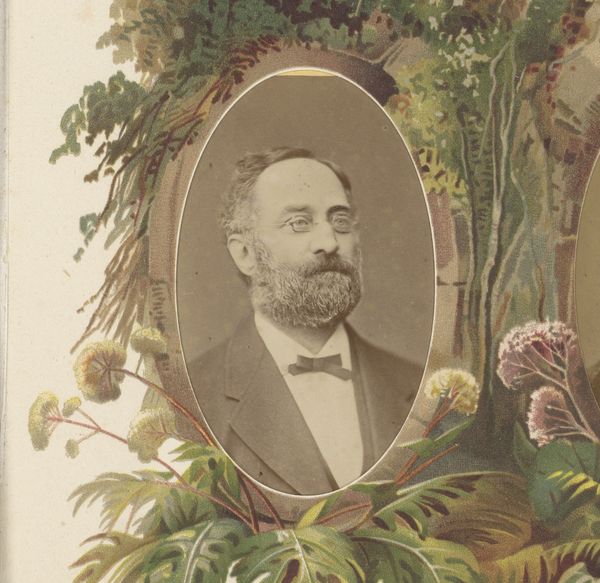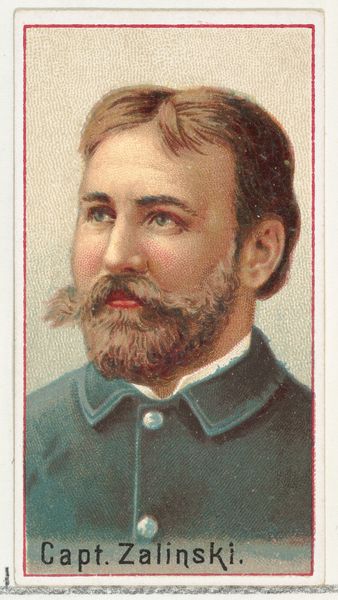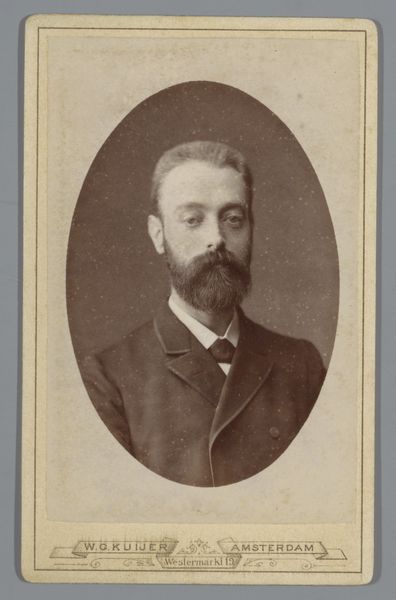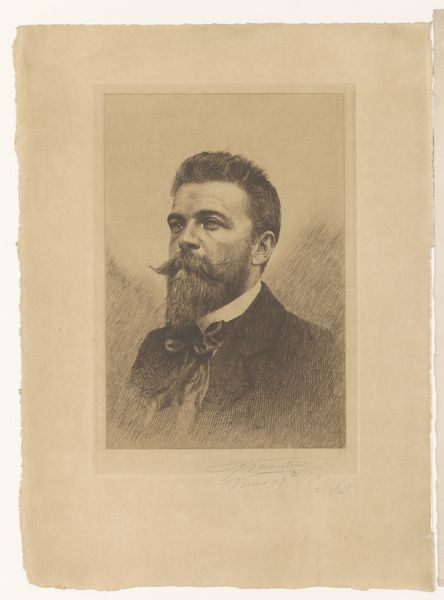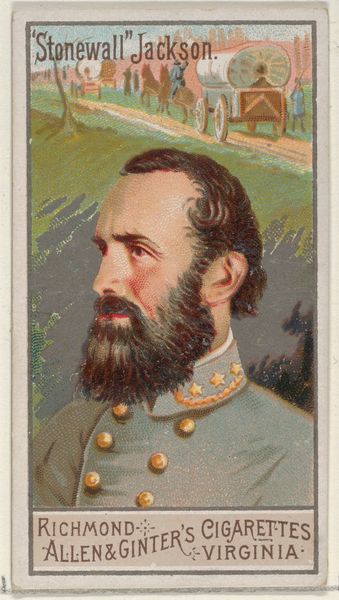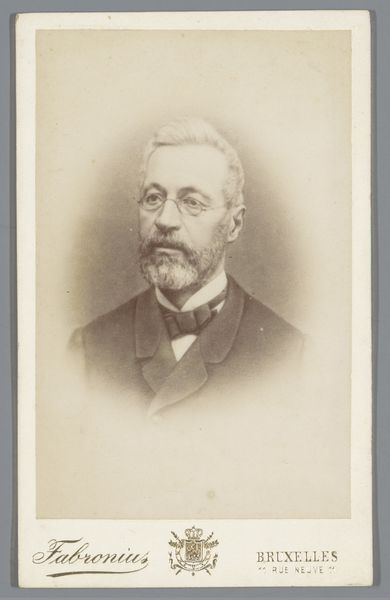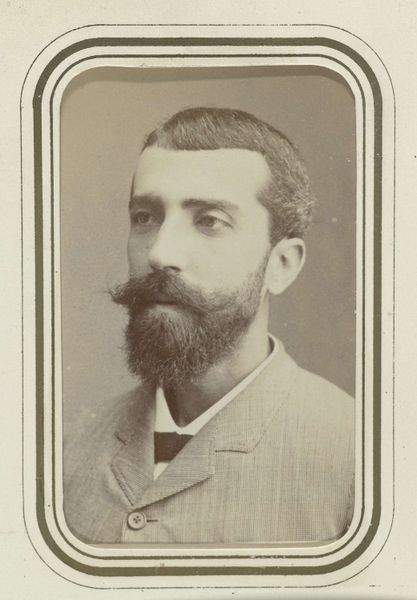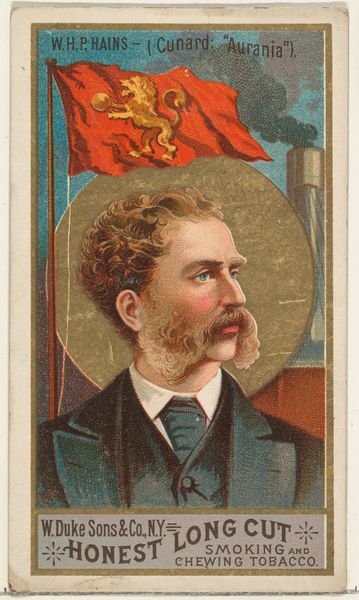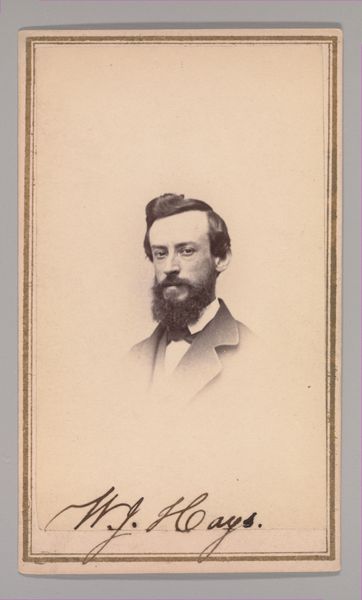
Joseph Pulitzer, The New York World, from the American Editors series (N35) for Allen & Ginter Cigarettes 1887
0:00
0:00
drawing, graphic-art, print
#
portrait
#
drawing
#
graphic-art
# print
#
impressionism
#
watercolour illustration
#
portrait art
Dimensions: Sheet: 2 7/8 x 3 1/4 in. (7.3 x 8.3 cm)
Copyright: Public Domain
Editor: Here we have Joseph Pulitzer, The New York World, created around 1887 as a lithograph print. The illustration seems very much a product of its time. What social or political statements can we read in it? Curator: It's important to recognize that this image comes from a series of cigarette cards. We might want to consider it less as a straightforward portrait and more as a commercial artifact, embedded in the political economy of its time. It evokes a very romantic view of entrepreneurship and "American" success... But at what cost was that success achieved? Who benefited and who was marginalized? Editor: I see what you mean! It feels almost celebratory, this idealization of a powerful man. Curator: Exactly. It reflects the narratives that were being constructed and circulated. How did images like this shape public opinion? How does Pulitzer’s power intertwine with that of the press, particularly at that historical juncture, when media was truly taking hold and establishing its role? The card romanticizes Central Park. The park, designed in part to assuage class tension and unrest, represents a utopian ideal, maybe at odds with the often stark realities of that same period. Editor: So the picture can be viewed as propaganda, as part of the creation of the 'American dream'… What should contemporary audiences consider? Curator: Consider how power operates through seemingly innocuous images. It challenges us to ask critical questions about representation and ideology even in something as simple as a cigarette card. Editor: I guess I had viewed this portrait very simplistically, just another work of that period. I now realize how layered images can be with their particular messages. Thank you. Curator: It’s precisely that awareness that is critical in today's world. Thanks!
Comments
No comments
Be the first to comment and join the conversation on the ultimate creative platform.
